Morning glories are vigorous vines that can grow ten feet tall or larger, producing attractive funnel-shaped blooms through the summer.
In order to maximize the quantity of blooms and keep these aggressive climbers in check, it is useful to do some occasional pruning and deadheading of spent flowers.

We link to vendors to help you find relevant products. If you buy from one of our links, we may earn a commission.
Continue on to learn how to trim morning glories.
What You’ll Learn
Pruning morning glories is not challenging.

By following a few simple steps throughout the season – such as pinching back seedlings, deadheading spent blossoms, and trimming ragged vines – you will be able to encourage healthier, more manageable plants with abundant flowers.
Pinch Seedlings in Spring
To encourage branching and rapid growth, you should pinch back seedlings when they have a couple of sets of true leaves. Cut them back about half an inch from the tips.

You can also pinch off the tips of any lateral stems that develop after that.
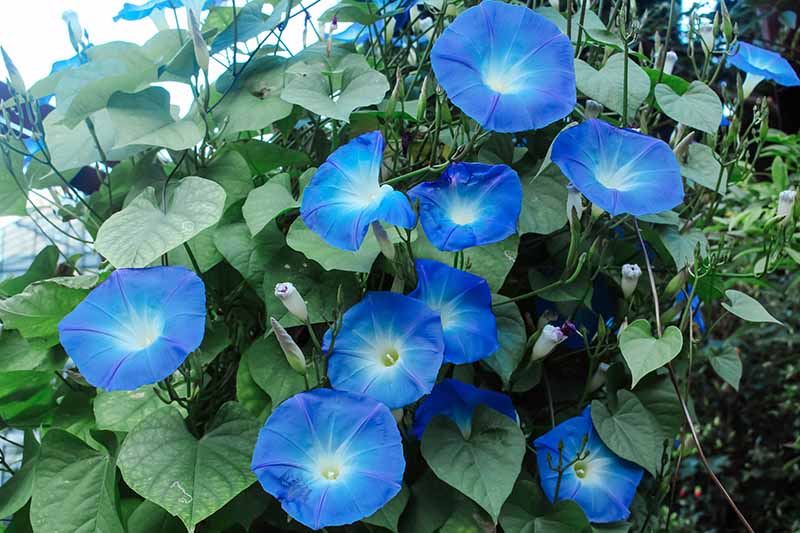
Continue to pinch the tips of new branches as they appear, to direct and shape the plant as you desire. Pinching back stems throughout the growing season will result in a more compact and bushier plant.
Prune During Summer
To keep plants more contained and to reduce unwanted spreading, you can also trim lateral stems significantly. Cut back any vines to the desired length by trimming just past a leaf bud.
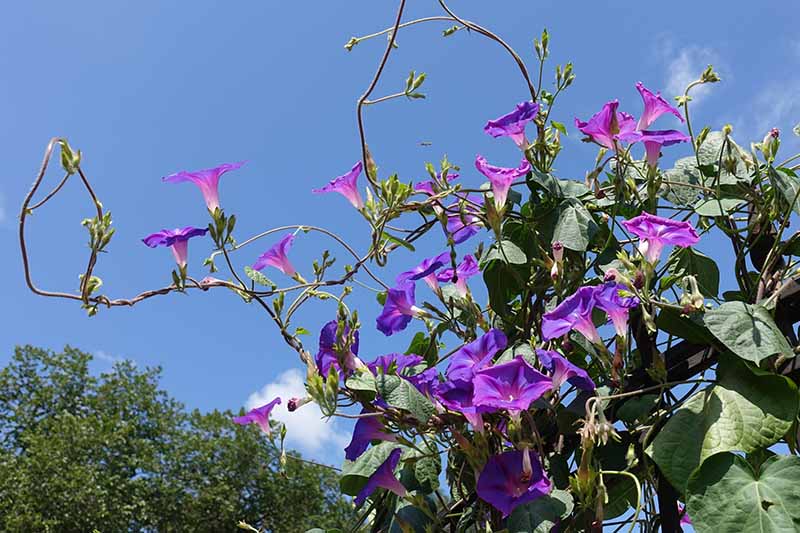
You can thin up to a third of the stems at a time. This can be done a few times during the growing season. Pruning also allows the remaining foliage to receive more sun, which will encourage flowering.
As summer wears on, plants may begin to look weary and you may notice blooming starts to slow.
When this happens, typically in late summer, you may be able to revive tired vines by cutting the whole plant back by about a third. This is also a good time to remove any diseased or damaged stems.
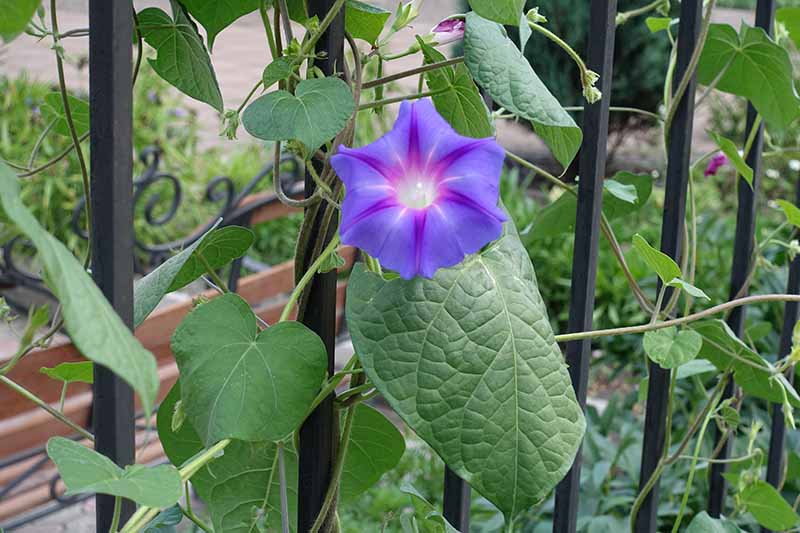
Keep in mind, these climbers are most often trained to grow up trellises of some kind. It can be helpful to carefully untangle vines from their trellis prior to pruning, to make sure you are cutting at the desired spot.
Cut Back in Fall
Morning glories are annuals in cold climates, and perennials in Zones 10 and 11.
Where they are grown as annuals, cut them back to the ground any time after blooming ends in the late summer or early fall. You will need to start new plants the following season.
For more detailed information on planting and growing morning glories, read our guide.
In warmer climates where they are perennials, cut back in late fall or early winter so the plants are about six inches tall. Vigorous growth will resume again in the spring.
Deadhead Spent Flowers
A unique aspect of morning glories is that blossoms open only in the morning, hence their name.
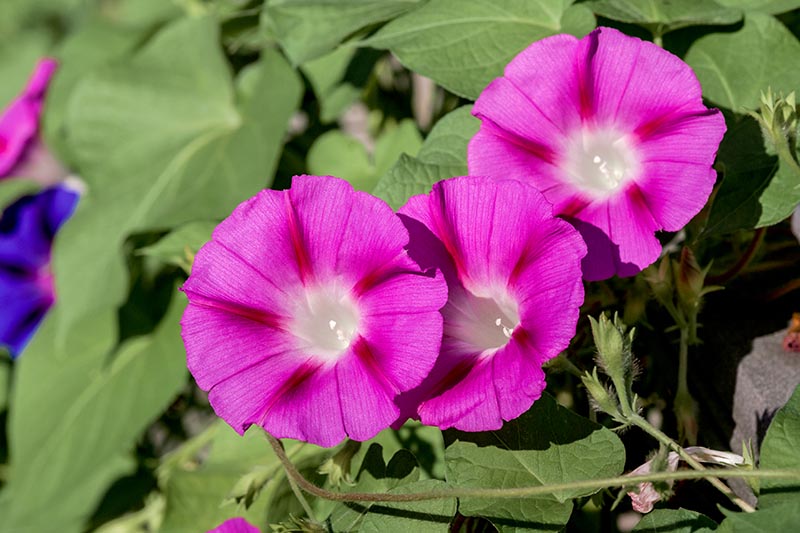
Once a flower closes in the afternoon, that flower will not open again. Instead, it will begin to produce seeds.
If you do not remove the spent flowers, the plant will need to direct much of its energy toward seed production, resulting in fewer blooms overall. Additionally, this plant can be an aggressive spreader and it reseeds easily.
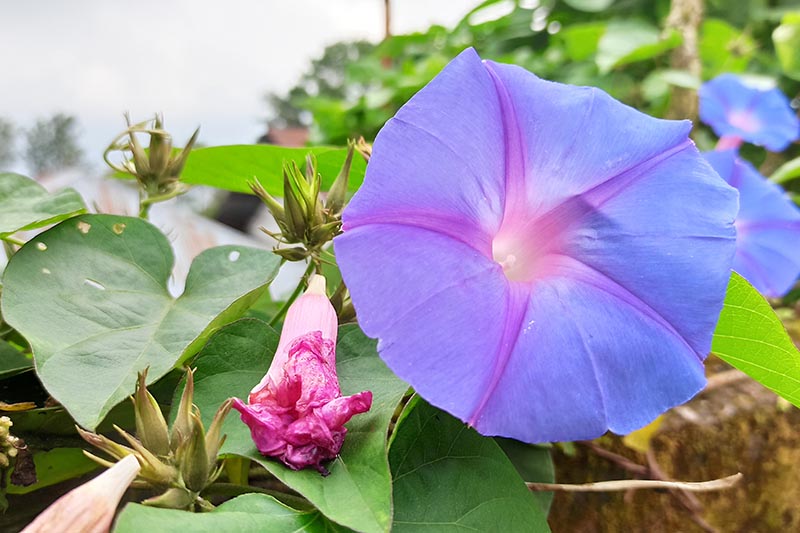
By deadheading spent flowers before they have a chance to set seed, you can reduce the chance of them spreading to unwanted places in the garden.
All you need to do is pick off the withered flowers each day, or whenever you notice them.
Read more about how to deadhead spent flowers here.
Best Not Left Alone
While it is true that they can be a bit unruly if allowed to grow unchecked, when well managed, these plants can make beautiful assets to the garden, adding vertical dimension and season-long color.

And managing them is so easy to do! All it takes is some occasional pruning and deadheading throughout the season, and you can turn a potential mess into a rewarding and attractive planting with tidy and attractive vines.
Do you have any other tips for pruning morning glories? Share your thoughts and questions in the comments section below.
And for more information about morning glories, check out these guides next:



This is helpful. My morning glories have gone crazy. I planted several seeds thinking only a few will grow. Well how wrong I was. 5 different vines in one package. Blue, purple, pink, orange blooms. I can thin these out now or wait after first freeze?
Hello Jeanette. That is a wondrous show of morning glories! It’s up to you if you’d like to try to uproot some of the vines, but I would recommend cutting the ones you don’t want back to the ground the day they’re done flowering, probably in early autumn a month or more ahead of the first frost.. I would take steps to deadhead all the flowers, too, to limit volunteers next year though from the looks of this, you’re going to have lots no matter what you do. Luckily, they’re pretty, and you have them in a spot where they… Read more »